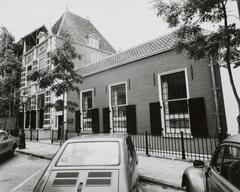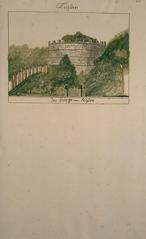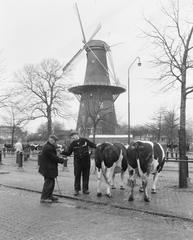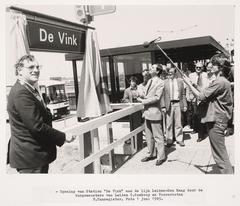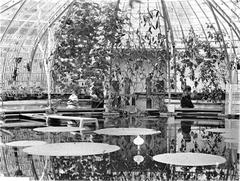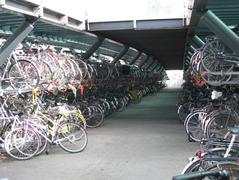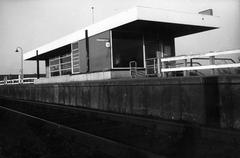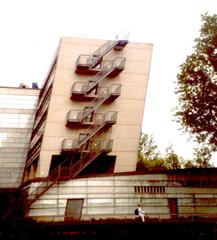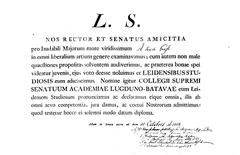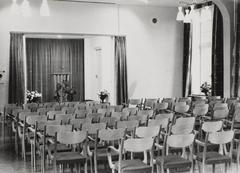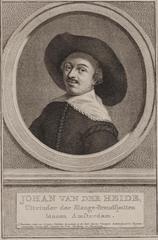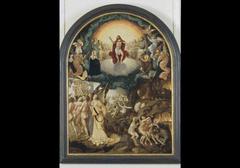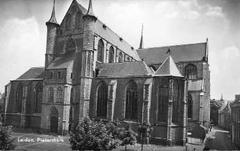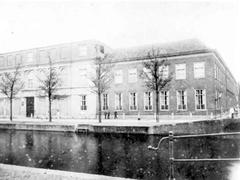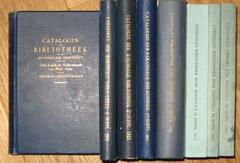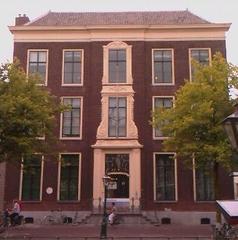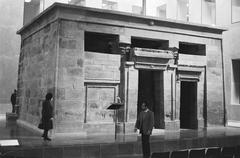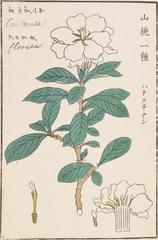
Koornbrug Leiden: Visiting Hours, Tickets, and Historical Sites Guide
Date: 04/07/2025
Introduction
Nestled in the heart of Leiden, the Koornbrug is a striking emblem of Dutch history, civic architecture, and vibrant community life. Built in 1642 during the Dutch Golden Age, this covered bridge originally functioned as a bustling grain market, reflecting Leiden’s importance as a commercial hub. Spanning the Nieuwe Rijn canal, the Koornbrug’s strategic location and architectural elegance have made it both a practical crossing and a beloved city landmark. Today, the bridge remains a vital social center, hosting markets, events, and offering visitors direct access to the city’s rich past and dynamic present (Evendo, Wikipedia, Visit Leiden).
This comprehensive guide details the history, design, visiting hours, accessibility, and significance of the Koornbrug, along with practical travel tips and recommendations for an enriching experience in Leiden.
Table of Contents
- Introduction
- Historical Background and Early Construction
- Architectural Evolution and Features
- Economic, Cultural, and Social Significance
- Preservation and Restoration
- Visiting Hours, Tickets, and Accessibility
- Nearby Attractions and Travel Tips
- Community Events and Modern Use
- Visuals and Media
- Frequently Asked Questions (FAQ)
- Summary and Key Takeaways
- References
Historical Background and Early Construction
The origins of the Koornbrug (meaning “Grain Bridge”) date to the mid-17th century, a period of prosperity and urban growth for Leiden. Completed in 1642, the bridge was designed to support the city’s grain market, which played a key role in Leiden’s economic success. Its location over the Nieuwe Rijn canal linked Haarlemmerstraat, a main shopping street, with the central market square, making it an essential part of the city’s trading network (Evendo, itravelforthestars.com).
Architectural Evolution and Features
Stone Arches & Foundations
The Koornbrug’s main structure consists of three robust stone arches, a testament to the advanced masonry techniques of the Dutch Golden Age. These arches allow efficient load distribution and are built from natural stone, ensuring durability and elegance. The understructure, largely original, is a notable example of 17th-century Dutch engineering (Wikipedia).
Neoclassical Overkapping
In 1834, a neoclassical colonnade was added, transforming the Koornbrug into one of the Netherlands’ few covered bridges. Designed by Salomon van der Paauw, the overkapping consists of parallel covered walkways with slender columns supporting a slate-tiled roof. This addition provided much-needed shelter for merchants and their goods, and remains a defining feature (Wikipedia, Evendo).
At the heart of the roofed section is Leiden’s coat of arms, flanked by sheaves of grain—a visual nod to the bridge’s mercantile heritage.
Columns & Ornamentation
The neoclassical columns, spaced for unobstructed canal views, were replaced during a major restoration in 1978. The capitals are restrained in line with the classical style, and the facades feature subtle decorative stonework, enhancing the bridge’s dignified yet understated appearance (Wikipedia).
Economic, Cultural, and Social Significance
The Koornbrug was central to Leiden’s economic expansion, serving as a key location for the grain trade. Over centuries, it has evolved into a vibrant social gathering place. The covered section has long sheltered both commerce and community life, hosting markets, festivals, and public events that continue the bridge’s tradition as a focal point for Leiden’s residents and visitors (Evendo, Visit Leiden).
The bridge is also an inspiration for artists and writers, featuring prominently in paintings, photography, and travel guides. Its photogenic quality, combined with panoramic canal views, makes it a favorite subject for both professionals and visitors.
Notable events include the annual Leidens Ontzet festival every October, when the bridge becomes a central stage for parades and celebrations (itravelforthestars.com).
Preservation and Restoration
Recognized as a national monument, the Koornbrug is protected by strict preservation regulations. Over the years, it has undergone several major restorations:
- 1978: Complete replacement of all columns and restoration of the roof with new slate tiles.
- 2007: Repairs due to wood rot, fungal growth, and damage from vandalism (Wikipedia).
- 2024-2025: Ongoing restoration to address cracks in columns and water damage, with completion expected before December 2025. Temporary access restrictions and a ban on cycling across the bridge are in effect to protect the structure (Omroep West, Sleutelstad).
Visiting Hours, Tickets, and Accessibility
- Visiting Hours: The Koornbrug is accessible to the public 24/7, with no entrance fee.
- Tickets: No tickets or reservations are required.
- Accessibility: The bridge is pedestrian and wheelchair friendly, with flat approaches and smooth pathways. Cyclists must dismount, especially during ongoing restoration work.
- Best Times to Visit: Wednesdays and Saturdays are market days, offering a lively atmosphere. Early mornings and evenings provide quieter, scenic experiences.
Nearby Attractions and Travel Tips
- Leiden City Hall and Burcht fortress are within a short walk.
- Museums: The National Museum of Antiquities and Museum De Lakenhal are nearby.
- Shopping and Dining: Haarlemmerstraat and Breestraat offer a range of shops, cafes, and canal-side terraces.
- Public Transport: Leiden Centraal Station is a 10-15 minute walk away; buses and parking garages are available for easy access (dutchwannabe.com).
- Canal Tours: Boat tours departing near the Koornbrug provide unique views of the bridge and historic city center (The Flashpacker).
Community Events and Modern Use
The Koornbrug continues to serve as a venue for markets, festivals, and artistic installations. Its covered walkways are used for events such as King’s Day celebrations and open-air concerts, maintaining its historical role as a community hub (Visit Leiden).
Visuals and Media
- Images: The bridge’s neoclassical roof and stone arches are best captured from the Nieuwe Rijn quay or during market days (alt text: “Koornbrug covered bridge with stone arches in Leiden”).
- Virtual Tours: Some Leiden tourism sites offer interactive maps and virtual walkthroughs.
- Photography Tips: Visit at sunset or after dark for stunning reflections and illuminated scenes.
Frequently Asked Questions (FAQ)
Q: What are the Koornbrug visiting hours?
A: The bridge is open 24/7 and free to access.
Q: Is there an entrance fee or ticket required?
A: No, visiting the Koornbrug is free for everyone.
Q: Is the Koornbrug wheelchair accessible?
A: Yes, the bridge is fully accessible for wheelchairs and strollers.
Q: Are guided tours available?
A: Yes, many local and self-guided tours include the Koornbrug; check at the Leiden Visitor Centre or online.
Q: Can I visit during market days?
A: Yes, market days (Wednesdays and Saturdays) are especially lively and offer a glimpse into the bridge’s historic atmosphere.
Q: What are the current restoration impacts?
A: Some areas may be temporarily closed or restricted due to ongoing restoration. Cycling across the bridge is currently prohibited.
Summary and Key Takeaways
The Koornbrug is much more than a functional crossing—it is a living monument encapsulating Leiden’s trade, architecture, and social traditions. With its distinctive neoclassical design and centuries-old role as a marketplace, the bridge remains a vibrant meeting point at the heart of Leiden. Ongoing preservation ensures its future, while its accessibility and proximity to other landmarks make it an essential stop for any visitor (Sleutelstad, Evendo).
For an immersive visit, plan around market days, explore nearby attractions, and take advantage of guided tours. Stay updated via official channels and apps for restoration news and event schedules. The Koornbrug invites you to experience a unique chapter of Dutch heritage where history, community, and urban life converge.
References
- Evendo – Koornbrug Leiden: Visiting Hours, Tickets, and Historical Guide
- Visit Leiden – Koornbrug Information
- Wikipedia – Koornbrug
- itravelforthestars.com – Leiden Travel Guide
- Sleutelstad – Koornbrug krijgt opknapbeurt voor 200e verjaardag
- Omroep West – Scheurtjes geconstateerd in monumentale brug
- The Flashpacker – One Day in Leiden
- dutchwannabe.com – Things to Do in Leiden



